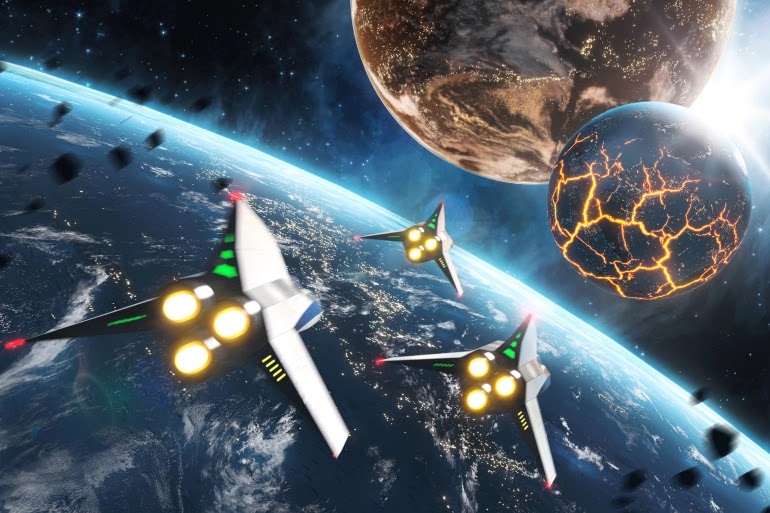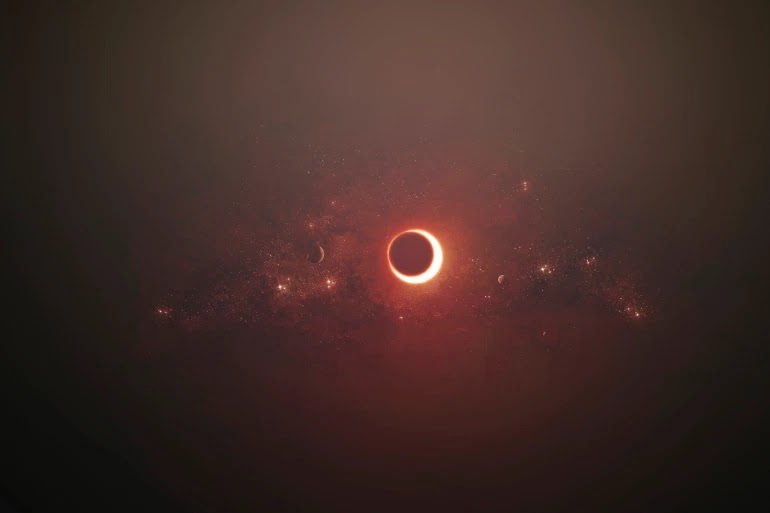Recently, two American astronomers identified 29 nearby exoplanets that may have harbored advanced civilizations that have been monitoring life on Earth for about 5,000 years, or may do so in the future.
In a report published by the French magazine L’OBS, writer Jean-Paul Fritz says that coinciding with the time that humanity has spent over the past few decades observing other planets, it is likely that if there are other intelligent civilizations, they have been watching us as well.
If such civilizations actually exist and are watching us from afar, where are they exactly? That is the question posed by two American astrophysicists, who revealed the results of their study in the journal Nature last June.
Whether through the gravitational effect they exert on the stars around them, or the diminution of luminosity they cause when passing in front of their sun, exoplanets provide us with enough elements to discern their nature – whether rocky or gaseous – through telescopes and observations.

|
| More than 4,000 exoplanets have been observed since the early 90s |
Humans are the Aliens
Exoplanet science is a modern science, and more than 4,000 planets have been observed since the early 1990s, with a significant peak in the number of planets discovered after the launch of the Kepler space telescope.
Astrobiologists who study the possibilities for the existence of life in other places outside Earth are steadily developing modern techniques to try to classify the signs that may indicate that there is a planet outside the solar system that could fit the evolution of plants or animals, which is called biosignatures.
Lisa Kaltenegger, director of the Carl Sagan Institute at Cornell University, and Dr. Jackie Faherty, of the Department of Astrophysics at the American Museum of Natural History, hypothesized that “if humans were able to search for signs of life or civilizations on distant planets, those civilizations (if They were found) do the same as well. It remains to be known, which planets are capable of doing this,” and this is what the two researchers worked on to study.
“From an exoplanet standpoint, we are aliens,” explains Professor Kaltenegger, adding that she and her colleague worked out which stars were in a good position to see Earth when the sunlight was blocked.
In fact, over thousands of years the stars (including the Sun) have changed their position in the galaxy, so observations of the Earth at certain times were available from an exoplanet, but after a few hundred years the situation changes and observation becomes impossible.
The importance of eclipse
To detect signs of life on other planets, you must be able to point the telescope directly at it. Currently, the only way to observe is for the planet to be in transit, passing between us and its star, a kind of distant eclipse.
This provides information about the potential atmosphere by analyzing the light from the planet. But for the transit to occur, the orbit of the exoplanet must be pointing toward Earth.
Using the European Space Agency’s Gaia database, which contains information on all stars within a radius of 100 parsecs (a parsec equals approximately 3.26 light years); Lisa Kaltenegger and Jackie Faherty have identified 2,034 star systems that have the potential to observe Earth.
“The Gaia observatory provided us with an accurate map of the Milky Way, which allowed us to look into the past and the future and see where the stars were and where they are heading,” says Dr. Faherty.
The two scientists believe that any observer of the Earth would have room to do so, and Professor Kaltenegger explains, saying:
“Our analyzes show that even the closest stars spend more than a thousand years in a position to see Earth transits. This would provide enough time for supposed civilizations to observe Earth as an interesting planet.”
 |
| The only way to observe a planet is when it’s passing between us and its star. |
29 exoplanets
Going into the details of the study, we discover some interesting facts. For example, 128 of these stars turned out to be G-types, like the Sun of the Milky Way.
Altogether, of the more than 2,000 stars, perhaps 1,715 have been observed by us in the past, and 319 will be added to the list of potential observers sometime in the next 5,000 years. Of the more than 2,000 stars, 117 are within 100 light-years of the Sun.
Of course, for there to be aliens, there must be habitable planets. Of the 2,034 stars, only 7 currently have specific exoplanets. This does not mean that other stars do not have planets, but so far we have not been able to observe them.
This is not surprising. Even today, the most easily observed planets are gas giants, given their size and mass. In contrast, rocky planets, such as Earth, are difficult to detect if they do not pass directly in front of their star. In addition, our telescopes have so far only explored a very small portion of the visible sky.
Statistically, taking into account data for exoplanets that have already been discovered, the study estimates that there are likely 508 rocky, habitable planets. Within 100 light-years, 29 of those planets are able to see and hear us.
Neighboring planets are viable
In the list of these close neighbors, we notice a number of exoplanets already known, starting with the closest, Ross 128 b, which orbits a red dwarf planet 11 light-years away toward the constellation Virgo.
This planet – which is more than 35% of the mass of Earth – is located in a habitable zone, so there is a theoretical possibility of the presence of liquid water on its surface. And if there was an advanced civilization on the surface of this planet, it could have observed us from afar for more than two thousand years, but that was no longer available 9 centuries ago, according to the study.
In contrast, the TRAPPIST-1 system – which is known to have 7 planets close to Earth, including 4 planets in the “habitable zone” – can’t see us yet.
As for the star Teegardens – one of the smallest known stars, which is about 12.5 light-years away from us and includes two planets slightly larger than Earth, both of which are located in a “livable area” – its inhabitants – if they exist – can observe the Earth only starting from the year 2050 .
There are no extraterrestrials yet
The author considers that despite the value of these results, the limitations of the study must be considered.
- First, we don’t know if there are exoplanets that are habitable in the estimated proportions.
- Second, the concept of viability remains questionable to this day.
- Third, life does not necessarily appear on a planet just because the conditions are right for it.
However, the hypotheses of the two researchers, although they are not based on practically proven evidence, have practical benefits, as they predetermine the stars that can be the subject of more detailed studies to monitor evidence of intelligent life outside Earth.
The James Webb Space Telescope, scheduled to launch no later than November 2021, is expected to take a closer look at the many exoplanets whose atmospheres can be analyzed.
Dr. Faherty postulates that “we can imagine that the distant worlds we have already discovered are making similar plans to ours. This study allows us to imagine which of our neighboring planets might be able to find us.”
Source:
- https://www.nouvelobs.com/sciences/20210623.OBS45643/si-des-extraterrestres-nous-observent-ils-sont-forcement-sur-une-de-ces-29-planetes.html#
- https://www.nature.com/articles/s416-y

